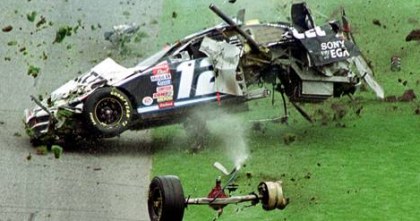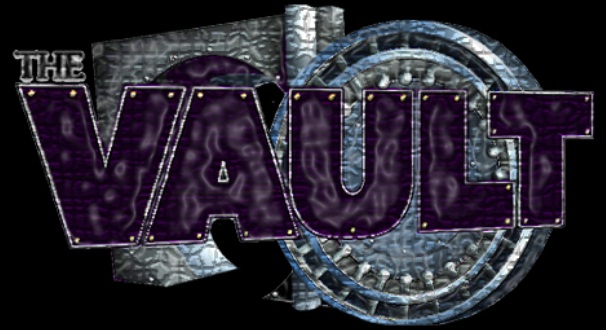If you watch NASCAR racing on television on a regular basis, you might believe that race car drivers are all about safety. They certainly go out of their way to appear to be safety conscious, but are they really?
Most are, but some may not be so safety minded when the TV cameras are pointing in another direction.
Dale Earnhardt cut corners with safety and it cost him dearly, and while that temporarily shocked other drivers at all levels into thinking about safety, not all got the message. On the local level there are a huge variety of drivers fielding a wide variety of race cars at tracks all over the country.
Some tracks are very safety conscious and mandate that drivers protect themselves and others. Others are far less worried about it, leaving it up to the drivers to protect themselves.
Unless a racing facility has safety rules mandated by a sanctioning body such as NASCAR, there is virtually no one making sure that racers think about safety from week to week unless the track does it voluntarily. Companies that insure race tracks require that the tracks do safety inspections on the cars, but no one is there to be sure that it is being done correctly, or even being done at all.
Most speedways have a safety program in place, and cars are inspected for basic safety measures before they are allowed onto the track, even for practice. But the level of such inspections varies from track to track, and sometimes these inspections are not done as stringently as they should be. And forget about local or state mandated inspections for safety. There virtually are none.
The real problem is with the racers themselves. Safety has a price, and some drivers may have deep pockets and can afford to be safer than others. For example, one is more likely to find a driver wearing a Hans device if they are driving an expensive race car rather than driving a bomber. Too often the level of risk a driver is willing to assume is directly proportional to the amount of money that driver has in reserve to invest in racing. And in some cases it is a matter of personal opinion. Some drivers feel that extra safety measures are a must while others believe racing is a risky business and you should not be out there if you are not willing to risk being maimed or killed. The risk becomes part of the thrill of racing.
Whether Darwin was right or not is only part of the issue here. The attitude might be that if you are willing to assume risks and the worst case scenario happens, then you may get what is coming to you. Certainly more than one driver has fallen victim to that attitude, and some have been lucky enough to live to regret it instead of being killed outright. Maybe we could excuse foolish risk taking if the risk taker was the only one at risk, but that is not how it works.
Cutting corners is cutting corners, and the more corners one cuts the more risk that they assume. Unfortunately, that risk not only applies to the driver behind the wheel of that particular car. It also can apply to the other racers, track employees, and the fans. An example would be an illegal fuel cell that ruptures and spills fuel all over the track in an accident. Certainly that puts the driver of that car at extreme risk, but if this happens at the fence in front of the grandstands the fans are at risk, and what about the guy who is involved in the same crash? What if his disabled race car is wadded up with the one that is engulfed in flames? That driver who cut corners applied risks to him that he never counted on taking. And then there are the rescue and track crews who have to deal with the emergency directly. While they know their job comes with risks, they might not be counting on a driver who deliberately cut corners in order to save time, money, or both.
The drivers themselves typically build the cars so it is up to them to decide how safe that they want to be. Above that, the track must dictate it’s own degree of safety and do inspections to be sure that degree is met. And above the tracks, the insurance industry needs to protect itself, and the community and state needs to step up and protect it’s citizens from potential harm. If safety is dictated and monitored on all levels then everyone is safer. And racing is usually a safe sport, but the potential for disaster climbs exponentially with the slightest lapse of diligence for safety.
And when it comes to the drivers, the cars are not the only area where lapses in judgement can lead to serious consequences. Safety equipment also includes what the driver wears, and many tracks allow drivers to race in outdated, ill fitting, and sometimes nonexistent, protective wear. Again, safety has a cost, and drivers need to ditch those old worn out fire suits for something newer and more protective. And amazingly, some drivers are still racing in the old two piece suits which are considered to be very unsafe by today’s standards, and most neglect to wear fire retardant undergarments as recommended by most manufacturers of racing suits. The money saved by not replacing that old suit is fine and dandy until the moment when the car erupts in flames. Then it is too late to regret not spending the money.
And finally, drivers need to think about where they are racing and who they are racing against. Any driver entering a racetrack for the first time should be aware of what is going on and make some mental notes. First of all, how are the other drivers conducting their business? Are they safety conscious or not? Are guys going out and practicing without gloves, with window nets down, or any other type of blatant disregard for safety? And how do they conduct themselves on the track? Are they bumping and banging each other recklessly?
The pit area is a good gauge of how safety conscious the track might be. Look at how the pit area is maintained. Is it well lit? Are there people on ATV’s and golf carts rushing all over the place? Are children allowed to play in the area? Are the race cars going too fast in tight quarters? And what are people doing? Are people in the pits working on cars doing it in a safe manner?
And look at the track too. Look at the pavement and see where the skid marks are concentrated and where they go. Also look at the track walls for impact damage. A section of the wall that has obviously been hit repeatedly could signify a trouble spot for you to beware of later. Are there areas around the racing surface that are exposed and possibly create a safety hazard? What about a blunt end on a concrete wall directly facing some part of the track? What about guardrails and other barriers that might not withstand a hard impact, or areas that could potentially produce a hard impact for you?
And lastly, drivers should be aware of the safety crews. Are they adequately staffed? Do they appear to be trained professionals or just some yahoos that the track hired? Their equipment is important too. Do they have plenty of fire extinguishers at the ready? Do they have protective gear so they can reach into a fire and get you out? Are their trucks and the ambulance in good running order? Again, all of this really is not that big of a deal until the moment comes that something goes horribly wrong, and then it is too late to find out that the track is not adequately staffed or equipped.
Looking at the current situation with safety at race tracks all over America, it probably is not fair that so much of the basic responsibility falls squarely on the drivers themselves. But until attitudes change the drivers have to be the front line of safety in racing to protect themselves and others. Some may not see a need to improve beyond where we are, but I personally see that as a mistake. Bad things happen in racing, and eventually they can happen to us or someone we love. Anything we can do to reduce the possibility of bad things happening is a positive move.
BJ CAVIN currently announces and writes for Ocala Speedway in Florida. His personal blog is on MySpace.


 His Column, “A Closer Look with BJ Cavin†appears on Real Racin USA each Tuesday.
His Column, “A Closer Look with BJ Cavin†appears on Real Racin USA each Tuesday.




